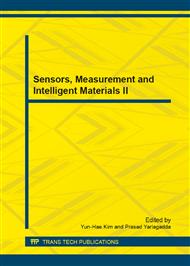[1]
Cai, W., A new tolerance modeling and analysis methodology through a two-step linearization with applications in automotive body assembly, Journal of Manufacturing Systems, 27 (2008), 26-35.
DOI: 10.1016/j.jmsy.2008.05.002
Google Scholar
[2]
Jin, S. and C. Zheng, et al., Tolerance design optimization on cost–quality trade-off using the Shapley value method, Journal of Manufacturing Systems, 29 (2010), 142-150.
DOI: 10.1016/j.jmsy.2011.01.003
Google Scholar
[3]
Mansuy, M. and M. Giordano, et al., A new calculation method for the worst case tolerance analysis and synthesis in stack-type assemblies, Computer-Aided Design, 43 (2011), 1118-1125.
DOI: 10.1016/j.cad.2011.04.010
Google Scholar
[4]
Qureshi, A. J. and J. Dantan, et al., A statistical tolerance analysis approach for over-constrained mechanism based on optimization and Monte Carlo simulation, Computer-Aided Design, 44 (2012), 132-142.
DOI: 10.1016/j.cad.2011.10.004
Google Scholar
[5]
Cho, N. and J. F., Tu Quantitative circularity tolerance analysis and design for 2D precision assemblies, International Journal of Machine Tools and Manufacture, 42 (2002), 1391-1401.
DOI: 10.1016/s0890-6955(02)00080-9
Google Scholar
[6]
Manarvi, I. A. and N. P., Juster Framework of an integrated tolerance synthesis model and using FE simulation as a virtual tool for tolerance allocation in assembly design, Journal of Materials Processing Technology, 150 (2004), 182-193.
DOI: 10.1016/j.jmatprotec.2004.01.036
Google Scholar
[7]
Ding, Y. U. and J. Jin, et al., Process-oriented tolerancing for multi-station assembly systems, IIE Transactions, 37 (2005), 493-508.
DOI: 10.1080/07408170490507774
Google Scholar
[8]
Huang, W. and T. Phoomboplab, et al., Process capability surrogate model-based tolerance synthesis for multi-station manufacturing systems, IIE Transactions, 41 (2009), 309-322.
DOI: 10.1080/07408170802510408
Google Scholar


